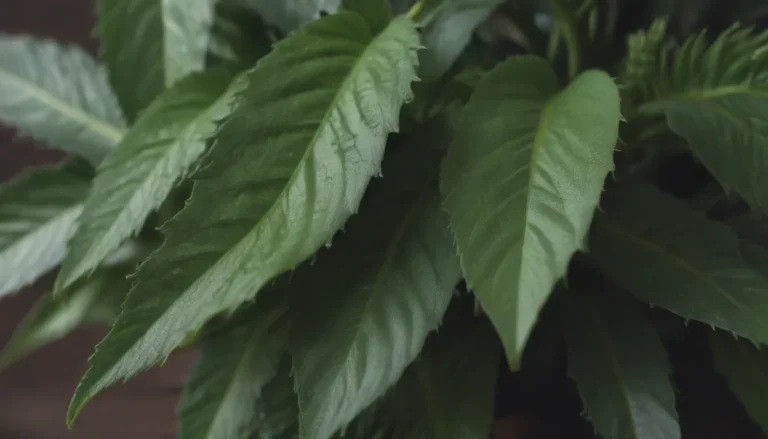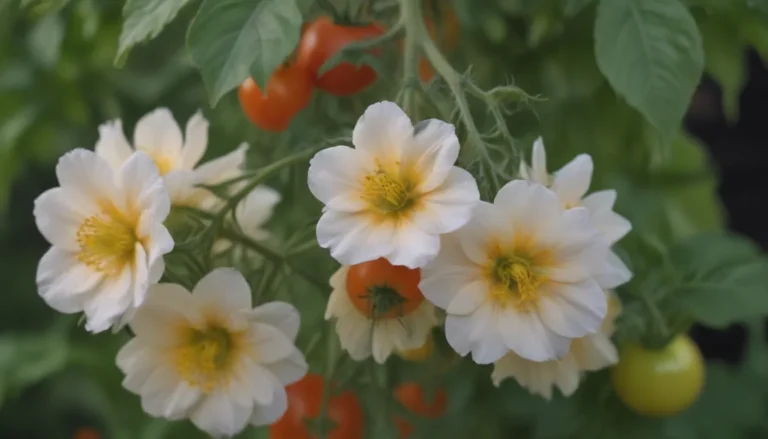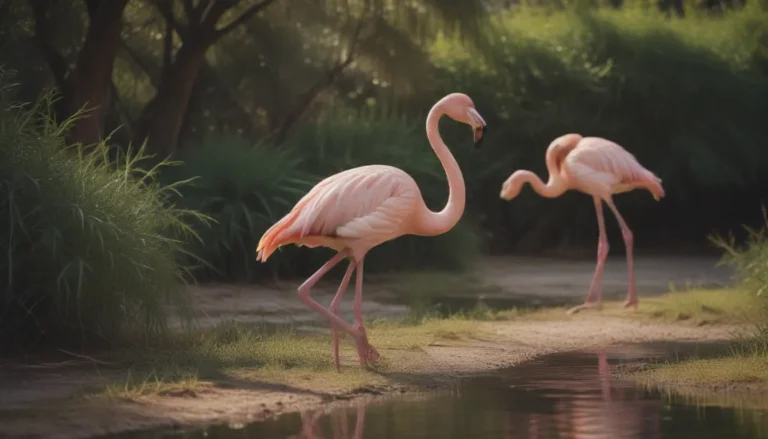The Best Flowers for Allergy Sufferers: A Comprehensive Guide

Are you an allergy sufferer who loves flowers but dreads the onslaught of hay fever season? You’re not alone. Many people with allergies find themselves avoiding beautiful blooms for fear of triggering their symptoms. But fear not! There are plenty of flowers that are allergy-friendly and won’t send you running for the tissues.
In this in-depth guide, we’ll explore the best flowers for allergy sufferers, as well as some of the worst offenders to avoid. From azaleas to zinnias, we’ll cover a wide range of flowers that are sure to brighten up your garden without aggravating your allergies. So grab a cup of tea, settle in, and get ready to learn all about the best flowers for allergy sufferers.
Flowers to Avoid for Allergy Sufferers
Before we dive into the best flowers for allergy sufferers, let’s take a look at some of the worst offenders that can bring on a host of symptoms for those with allergies. Flowers in the Asteraceae family and others that are pollinated by the wind are often the culprits behind allergy flare-ups. However, many new cultivars of popular flowers have been bred to produce very little pollen, making them a safer option for allergy sufferers.
If you’re sensitive to pollen, it’s best to steer clear of highly fragrant flowers like gardenias, hyacinths, jasmines, and lilacs. While these flowers may not aggravate allergies, their potent scents can still be irritants for some individuals. Opt to enjoy these flowers outdoors where their fragrance can be appreciated without causing any discomfort.
The Best Flowers for Allergy Sufferers
Now, let’s turn our attention to the stars of the show – the best flowers for allergy sufferers. These blooms are not only beautiful but also hypoallergenic, making them safe choices for individuals with hay fever. Whether you have a green thumb or are just getting started with gardening, these flowers are sure to brighten up your outdoor space without triggering your allergies.
Azalea (Rhododendron spp.)
Azaleas are woody shrubs that rely on insects for pollination, making them a safe choice for allergy sufferers. While these spring-blooming shrubs are among the best flowering shrubs for those sensitive to pollen, it’s essential to note that all parts of azalea plants are poisonous to humans, including their pollen. So, while azaleas may not aggravate allergies, it’s best to admire them from a distance.
USDA Growing Zones:
Color Varieties:
Sun Exposure:
Soil Needs:
Begonia (Begonia Groups)
Thank goodness for begonias! These free-flowering plants shed very little pollen, making them a popular choice for shady gardens. With hundreds of different begonias to choose from, including rex, tuberous, rhizomatous, and semperflorens varieties, there’s a begonia for every garden style.
USDA Growing Zones:
Color Varieties:
Sun Exposure:
Soil Needs:
Bougainvillea (Bougainvillea Group)
The vibrant “flowers” of bougainvillea plants are actually specialized leaves called bracts that surround the tiny white flowers. These plants produce very little pollen, making them a safe choice for allergy sufferers. With about 14 species in the Bougainvillea genus, you’re sure to find a colorful option for your garden.
USDA Growing Zones:
Color Varieties:
Sun Exposure:
Soil Needs:
Cactus (Various spp.)
While you may not think of cactus plants as having flowers, many cacti rely on insects and birds for pollination, rather than the wind. This means that cacti produce very little airborne pollen, making them an excellent choice for allergy sufferers. Plus, their unique shapes and low-maintenance care make them a standout addition to any garden.
USDA Growing Zones:
Color Varieties:
Sun Exposure:
Soil Needs:
Camellia (Camellia spp.)
Despite their lovely rose-like flowers, camellias are not allergy-inducing plants. These flowers have “perfect” flowers, meaning they have both male and female reproductive organs on the same bloom, reducing the need for pollen to travel long distances for pollination.
USDA Growing Zones:
Color Varieties:
Sun Exposure:
Soil Needs:
Clematis (Clematis spp. and Hybrids)
Most clematis vines are safe choices for allergy sufferers, with the exception of varieties like sweet autumn and virgin’s bower. Whether you opt for a vine form or a low-growing shrub-like variety, clematis is sure to add a touch of elegance to your garden without triggering allergies.
USDA Growing Zones:
Color Varieties:
Sun Exposure:
Soil Needs:
Coleus (Coleus spp.)
Coleus plants are known for their colorful leaves, and most gardeners pinch off the flowers before they bloom to encourage fuller foliage. With easy propagation through stem cuttings, coleus is a versatile and low-pollen option for allergy sufferers.
USDA Growing Zones:
Color Varieties:
Sun Exposure:
Soil Needs:
Columbine (Aquilegia spp.)
While the brush-like stamens of the columbine flower may look like they could explode with pollen, these plants rely on nectar-loving birds and insects for pollination. With their unique spurs and vibrant blooms, columbines are a charming addition to any garden.
USDA Growing Zones:
Color Varieties:
Sun Exposure:
Soil Needs:
Geranium (Geranium spp.)
Perennial geraniums, also known as cranesbill, give off very little pollen and are favored by breeders for their allergy-friendly traits. While some people may experience contact irritation from touching the leaves, geraniums are generally a safe choice for allergy sufferers.
USDA Growing Zones:
Color Varieties:
Sun Exposure:
Soil Needs:
Hibiscus (Hibiscus spp. and Hybrids)
While hibiscus flowers may produce heavy pollen, it is not airborne, making them a safe choice for individuals with hay fever. In warmer zones, tropical hibiscus species thrive, while hardy varieties can withstand colder climates.
USDA Growing Zones:
Color Varieties:
Sun Exposure:
Soil Needs:
Hosta (Hosta spp.)
Hosta plants are beloved for their low-maintenance care and attractive foliage. While some cultivars offer delicate blooms that attract pollinators, the pollen is not windborne, making hostas a safe choice for allergy sufferers.
USDA Growing Zones:
Color Varieties:
Sun Exposure:
Soil Needs:
Hydrangea (Hydrangea spp.)
Most hydrangeas are safe choices for allergy sufferers, especially modern cultivars. While ‘Pee Gee’ and ‘Oak Leaf’ hydrangeas may be best avoided by sensitive individuals, there are plenty of allergy-friendly options to choose from.
USDA Growing Zones:
Color Varieties:
Sun Exposure:
Soil Needs:
Impatiens (Impatiens spp.)
The pollen particles of impatiens plants are large and sticky, making them perfect for visiting insects to carry to the next flower. While some varieties were threatened by downy mildew, disease-resistant options are now available for this classic favorite.
USDA Growing Zones:
Color Varieties:
Sun Exposure:
Soil Needs:
Bearded Iris (Iris spp.)
Iris flowers are designed to attract bumblebees deep inside their blooms for pollination, making them a safe choice for allergy sufferers. With their unique shape and vibrant colors, bearded irises are a standout addition to any garden.
USDA Growing Zones:
Color Varieties:
Sun Exposure:
Soil Needs:
Lilies (Lilium spp.)
While lilies may produce a good amount of pollen, it’s easy to remove the stamens and pollen-laden anthers to prevent any issues. However, be cautious of the sap that can cause contact irritation in sensitive individuals.
USDA Growing Zones:
Color Varieties:
Sun Exposure:
Soil Needs:
Orchid (Orchidaceae family)
Orchids are known for their exotic beauty and unique blooms. While orchid pollen may not often trigger allergic reactions, some sensitive individuals may experience hay fever or skin irritations from the sap these plants exude.
USDA Growing Zones:
Color Varieties:
Sun Exposure:
Soil Needs:
Petunia (Petunia spp.)
Petunias are popular annuals known for their vibrant colors and trailing growth habit. While their scent may become more pronounced in mass plantings, petunia pollen is generally not considered an allergen, making them a safe choice for allergy sufferers.
USDA Growing Zones:
Color Varieties:
Sun Exposure:
Soil Needs:
Phlox (Phlox subulata, P. paniculata)
Phlox plants are often recommended as an alternative to mums, with their colorful blooms and low-pollen production. Whether you opt for creeping phlox or tall garden phlox varieties, phlox is sure to add a pop of color to your garden.
USDA Growing Zones:
Color Varieties:
Sun Exposure:
Soil Needs:
Roses (Rosa spp. and Hybrids)
Roses are beloved for their classic beauty and sweet fragrance. While rose pollen can be airborne, most roses do not trigger hay fever. With hybrid forms releasing less pollen than wild species roses, there are plenty of allergy-friendly rose options to choose from.
USDA Growing Zones:
Color Varieties:
Sun Exposure:
Soil Needs:
Snapdragon (Antirrhinum majus)
Snapdragons are a popular choice for spring and fall gardens, attracting bees with their unique flower shape. With tall and short varieties available, snapdragons will establish returning colonies of flowers for years to come.
USDA Growing Zones:
Color Varieties:
Sun Exposure:
Soil Needs:
Spring Bulbs (Various spp.)
Most spring bulbs are self-pollinating and have very low levels of airborne pollen. From crocuses to daffodils, these popular spring bloomers are safe choices for allergy sufferers looking to add some color to their garden.
USDA Growing Zones:
Color Varieties:
Sun Exposure:
Soil Needs:
Sea Thrift (Ameria maritima)
With its cheery globes of pink or white flowers, sea thrift relies on bees for pollination and should not cause distress for hay fever sufferers. Thriving in poor soils, sea thrift can be a colorful addition to coastal gardens.
USDA Growing Zones:
Color Varieties:
Sun Exposure:
Soil Needs:
Verbena (Verbena x hybrida)
Verbena plants are excellent for attracting pollinators to your garden, with rich nectar and pollen that does not travel on the wind. Whether potted indoors or planted outdoors, verbenas are a versatile and allergy-friendly choice.
USDA Growing Zones:
Color Varieties:
Sun Exposure:
Soil Needs:
Viola and Pansy (Viola spp. and Hybrids)
Violas and pansies are known for their vibrant colors and delicate blooms. With pollen too heavy to be caught up in the wind, these flowers are a safe and charming choice for allergy sufferers.
USDA Growing Zones:
Color Varieties:
Sun Exposure:
Soil Needs:
Zinnia (Zinnia elegans)
Zinnias may be part of the Astergenus, but newer hybrid varieties have been bred to be low-pollen options for allergy sufferers. With a wide range of heights and flower shapes available, zinnias are sure to brighten up any garden.
USDA Growing Zones:
Color Varieties:
Sun Exposure:
Soil Needs:
Conclusion
In conclusion, there are plenty of flowers that allergy sufferers can enjoy without fear of triggering symptoms. From azaleas to zinnias, there’s a wide range of hypoallergenic options to choose from. Whether you prefer vibrant colors, delicate blooms, or unique foliage, there’s a flower that’s sure to brighten up your garden without aggravating your allergies.
So go ahead, get out there and start planting! With the right flowers in your garden, you can enjoy the beauty of nature without the sneezing and itching that often accompanies hay fever season. Happy gardening!





